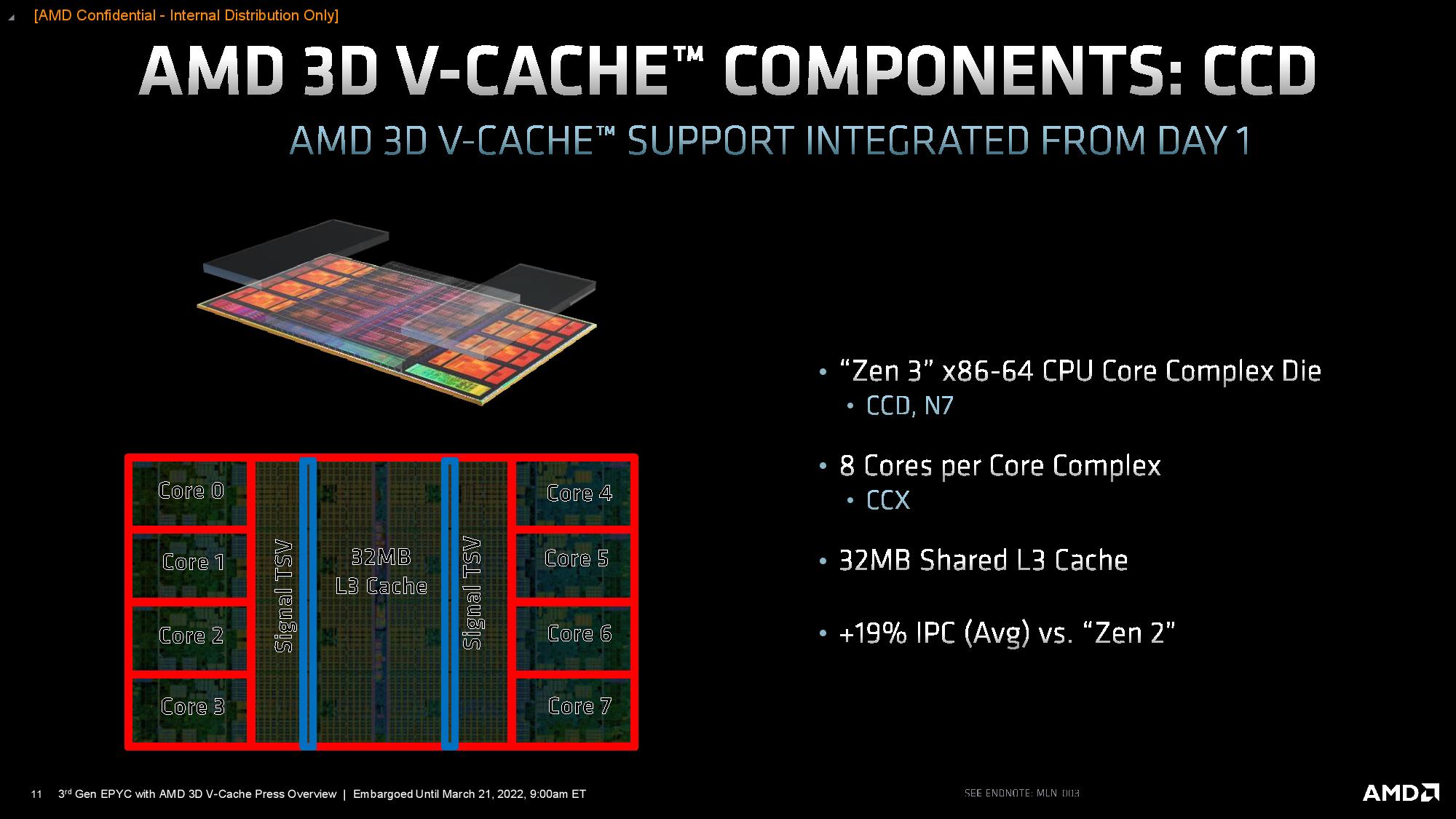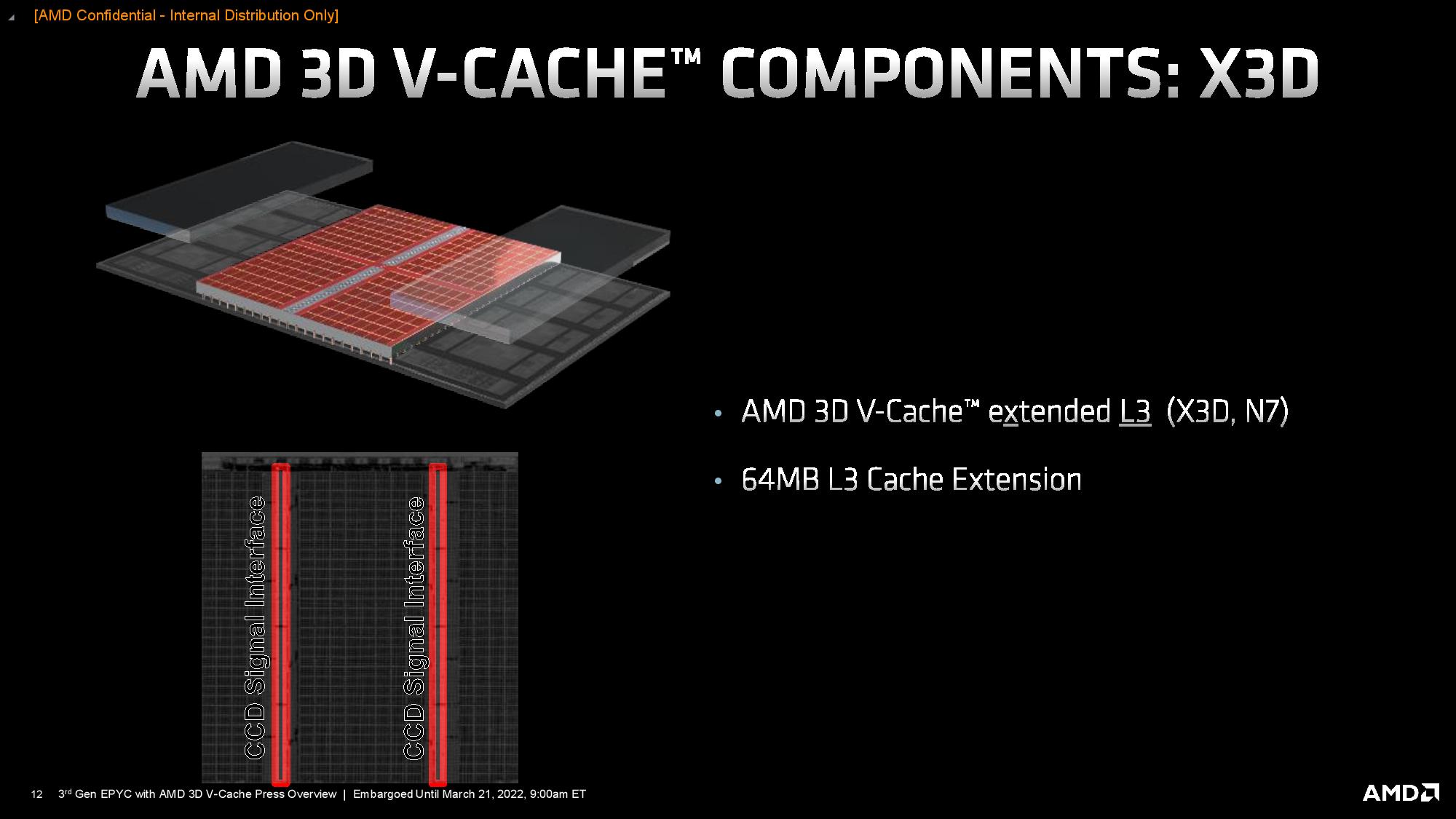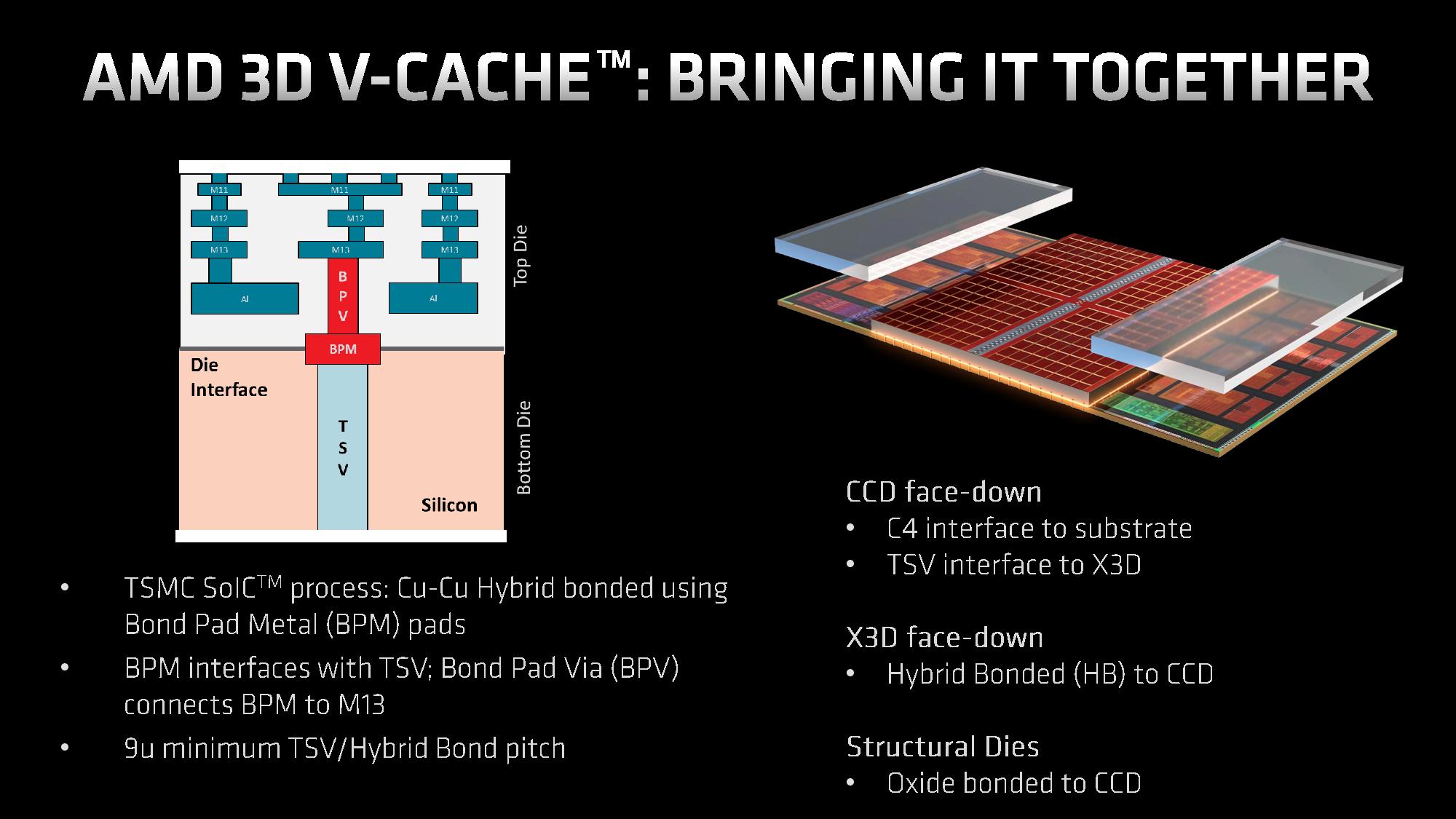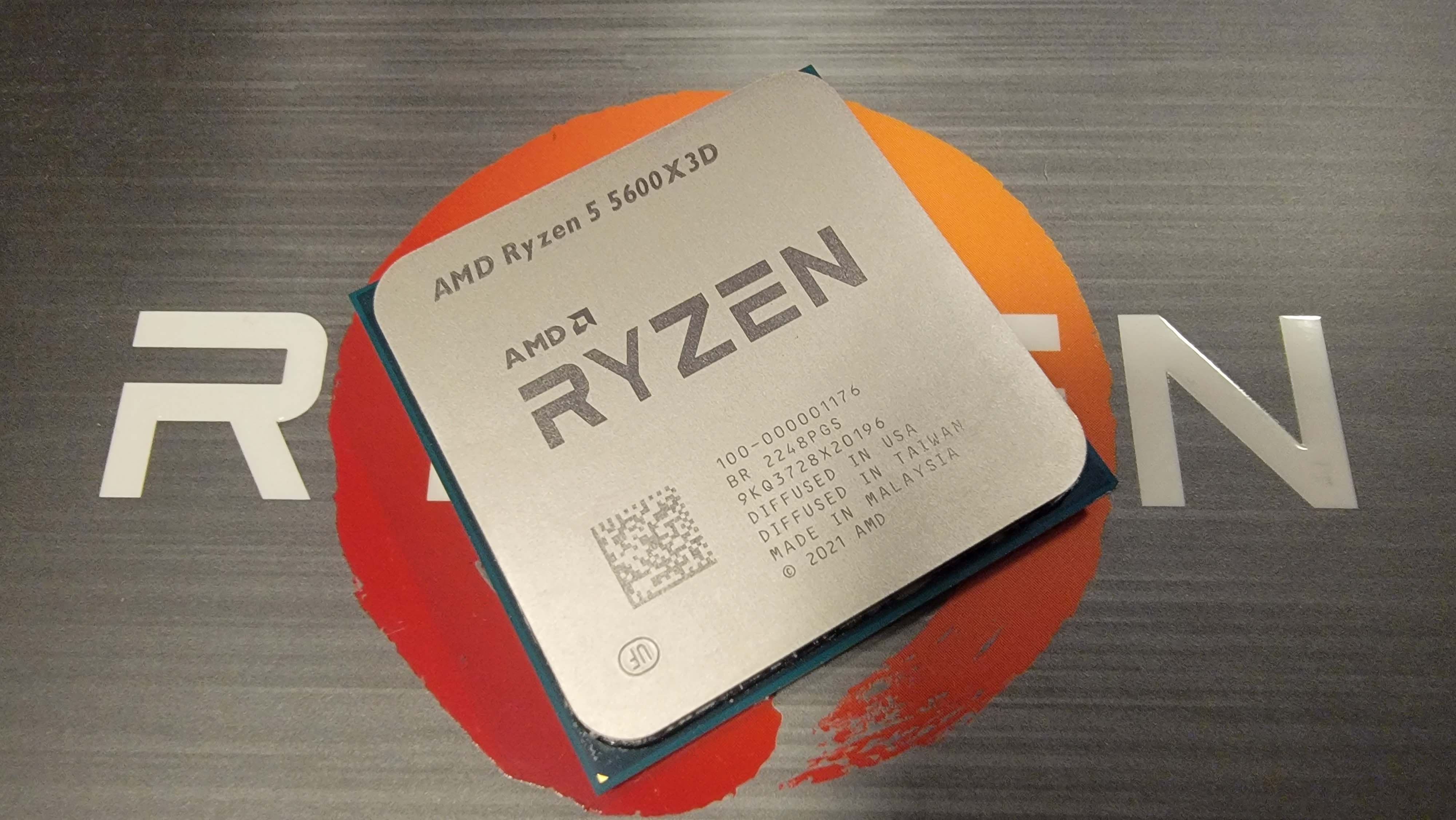Tom's Hardware Verdict
The limited edition Ryzen 5 5600X3D offers an unbeatable blend of gaming performance and price for mid-range gaming-focused builds. But the 3D V-Cache tech does result in lower performance in some productivity applications. The bundle deal is also enticing, but the chips and combo are only available through Micro Center.
Pros
- +
Exceptional gaming performance
- +
Excellent chip and combo deal pricing
- +
Compatible with AM4/DDR4
- +
Low power consumption
Cons
- -
Not as strong as competing chips in desktop PC applications
- -
Limited edition - US / Micro Center only
- -
No CPU core/voltage overclocking
- -
No integrated graphics
Why you can trust Tom's Hardware
AMD’s limited-edition $229 Ryzen 5 5600X3D comes with all the goodness of the company’s game-boosting 3D V-Cache technology, propelling it to the highest gaming performance in the mid-range price class. Overall, the 5600X3D is ~20% faster in gaming than the Intel Core i5-13400 that currently tops our list of the best CPUs for gaming. However, in a move that defies convention, the Ryzen 5 5600X3D comes to market as a Micro Center exclusive and will only be available while supplies last.
The six-core 12-thread Ryzen 5 5600X3D is a smaller version of the immensely popular eight-core $289 Ryzen 7 5800X3D that remains a top pick for gamers. However, the 5600X3D delivers 95% of the 5800X3D’s gaming performance for 20% less cash. As you can see in our CPU benchmarks hierarchy, at stock settings, the 5600X3D is also faster in gaming than the entire standard Ryzen 7000 lineup — including the $599 Ryzen 9 7950X. That’s because even though the Ryzen 5 5600X3D comes with two fewer cores and slightly lower clock speeds than its pricier 5800X3D counterpart, it still wields the same 96MB of game-boosting L3 cache.
| Price | Cores / Threads (P+E) | Arch. | P-Core Base / Boost Clock (GHz) | Cache (L2/L3) | TDP / PBP / MTP | |
|---|---|---|---|---|---|---|
| Ryzen 9 7950X3D | $669 | 16 / 32 | Zen 4 | 4.2 / 5.7 | 144MB (16+128) | 120W / 162W |
| Ryzen 9 7900X3D | $535 | 12 / 24 | Zen 4 | 4.4 / 5.6 | 140MB (12+128) | 120W / 162W |
| Ryzen 7 7800X3D | $438 | 8 /16 | Zen 4 | 4.2 / 5.0 | 104MB (8+96) | 120W / 162W |
| Ryzen 7 5800X3D | $289 | 8 /16 | Zen 3 | 3.4 / 4.5 | 100MB (4+96) | 105W |
| Ryzen 5 5600X3D | $229 | 6 / 12 | Zen 3 | 3.3 / 4.4 | 99MB (3+96) | 105W |
The Ryzen 5 5600X3D rounds out AMD’s portfolio of gaming-specific X3D processors, which now spans from $229 up to $669. The chip excels at gaming, but all the usual caveats of 3D V-Cache technology apply — this tech results in lower clock speeds that ultimately reduce performance in some productivity apps, and the tech doesn’t accelerate all games.
The 5600X3D is a new entry in the older Ryzen 5000 series, so it comes with the Zen 3 architecture, 7nm process node, and drops into last-gen AM4 motherboards. In contrast, AMD's newest Ryzen 7000 chips come with the faster Zen 4 architecture etched on the 5nm process and drop into newer AM5 motherboards. However, those chips carry a premium and require more expensive DDR5 memory, while the 5600X3D supports more economical DDR4, giving it an easy win in terms of total system cost.
Micro Center will also sell a $329 bundle with the Ryzen 5 56003XD, an ASUS B550-Plus TUF motherboard, and 16GB of G.Skill Ripjaws V DDR4 memory, a nearly unbeatable value. The retailer will also offer a pre-built $849 PowerSpec G516 system with a Radeon 6650XT, 16GB of memory, and a 500GB NVMe SSD.
Micro Center will only sell the Ryzen 5 5600X3D processors in its stores while supply lasts, beginning July 7. AMD and Micro Center haven’t confirmed the number of processors that will be available, but the retailer expects to have stock for a few months. Micro Center currently has 25 outlets in 18 states, so the chip will be US-only. Let’s dive into the details.
The Ryzen 5 5600X3D Backstory
The full story of the Ryzen 5 5600X3D will likely remain shrouded in secrecy for some time, but we’ve pieced together information from multiple sources. AMD hasn’t provided an official comment, but sources close to the matter tell us these chips were “purpose-built” to be launched as Ryzen 5 5600X3D parts. As such, they aren’t made of defective Ryzen 7 5800X3D processors.
Typically, we would expect the 5600X3D chips to be constructed from eight-core Ryzen 7 5800X3D processors that suffered defects in manufacturing and were then harvested as six-core models. However, the 3D V-Cache manufacturing process is more expensive than AMD’s standard packaging technique, so AMD only earmarks its fully validated silicon (Known Good Die – KGD) for the expensive 3D chip-stacking treatment. For Ryzen 7 5800X3D models, that means a fully working eight-core KGD.



AMD sends these KGD to a separate hybrid bonding stage that employs TSMC’s SoIC packaging process to link the base die to the 3D-stacked L3 chiplet. This connection occurs through two rows of TSVs (Through Silicon Vias) embedded in the cache portion of the underlying die, not the cores, and the stacked chiplet does not overlap the core area (deep dive into the process here). In addition to a slew of advantages that we cover in the linked material, this approach also minimizes or eliminates the chances of core-specific damage during bonding.
We’re told that AMD purposefully created the 5600X3D chips by either mounting a cache chiplet atop a standard down-binned six-core KGD die (like the one found in a 5600X), or intentionally disabling cores on some fully-working 5800X3D models. We're told that a misunderstanding of the description of the former process, which does use a down-binned standard die, probably resulted in erroneous reports that the 5600X3D are merely down-binned 5800X3D processors due to defects in the cores. (You can read more about the Second-Gen 3D V-Cache packaging tech used in the newer Ryzen 7000X3D models here.)
According to the batch number, our sample was built in week 48 (Nov/Dec) of 2022, but the design was copyrighted in 2021. Motherboard vendors tell us that the Ryzen 5 5600X3D was enabled in the same AGESA revision (underlying BIOS code) that enabled the Ryzen 7 5800X3D when it launched back in April 2022. Therefore, any AM4 motherboard with an AGESA 1.2.0.6b (or newer) BIOS will work with the 5600X3D. Motherboard vendors haven't tuned specifically for the 5600X3D because it was effectively a canceled processor. Instead, it only has a basic level of enablement.
During its exploration process into the new X3D tech, AMD game-planned and tested several Ryzen 5000X3D models, including the prototype Ryzen 9 5900X3D that Lisa Su teased at Computex 2021. However, like the 5900X3D, we’re told that the Ryzen 5 5600X3D ultimately wasn’t launched due to unspecified “business factors.” Considering the 5600X3D's exceptional performance-per-dollar ratio, it’s logical to think the 5600X3D threatened to severely cannibalize AMD’s Ryzen 7 5800X3D sales, not to mention sales of the then-forthcoming AM5 platform. Why buy the flagship gaming models when a less-expensive variant offers the lion’s share of the performance for less cash?
AMD has said repeatedly that the AM4 platform will serve as a value platform for the near future, but the 5600X3D chips are only available for a limited time, and AMD will not produce more. Combined with the fact that AMD now has newer-generation Ryzen 7000X3D chips, perhaps cannibalization isn’t as much of a concern. Pricing has also dropped quite a bit on the 5800X3D since it launched, and while $60 still separates the new 5600X3D from its sibling, in terms of total system cost, that's not a huge hurdle — if you don't pick up a 5600X3D in the next few months and they sell out, you can still opt for the slightly more expensive chip with two extra cores.
Both Intel and AMD have offered limited edition chips in the past, but it is unprecedented in recent memory to give a single retailer the full allotment of supply. The 5600X3D is available in the US only, but both Intel and AMD have also offered other region-specific chips in the past, particularly for the China market.
AMD Ryzen 5 5600X3D Pricing and Specifications
| Street/MSRP | Cores / Threads (P+E) | P-Core Base / Boost Clock (GHz) | E-Core Base / Boost Clock (GHz) | Cache (L2/L3) | TDP / PBP / MTP | Memory | |
|---|---|---|---|---|---|---|---|
| Ryzen 7 7800X3D | $440 | 8 / 16 | 4.2 / 5.0 | 104MB (8+96) | 120W / 162W | DDR5-5200 | |
| Ryzen 7 5800X3D | $289 ($449) | 8 /16 | 3.4 / 4.5 | 100MB (4+96) | 105W | DDR4-3200 | |
| Ryzen 5 7600 | $219 | 6 / 12 | 3.8 / 5.1 | 38MB (6+32) | 65W / 88W | DDR5-5200 | |
| Core i5-13400 / 13400F | $228 - $205 (F) | 10 / 16 (6+4) | 2.5 / 4.6 | 1.8 / 3.3 | 29.5MB (9.5+20) | 65W /148W | DDR4-3200 / DDR5-4800 |
| Ryzen 7 5700X | $200 | 8 / 16 | 3.4 / 4.6 | 32MB | 65W | DDR4-3200 | |
| Ryzen 5 5600X3D | $229 | 6 / 12 | 3.3 / 4.4 | 99MB (3+96) | 105W | DDR4-3200 | |
| Ryzen 5 5600X | $145 | 6 / 12 | 3.7 / 4.6 | 35MB (3+32) | 65W | DDR4-3200 | |
| Ryzen 5 5600 | $129 | 6 / 12 | 3.5 / 4.4 | 35MB (3+32) | 65W | DDR4-3200 |
Intel’s Core i5-13400/F has dominated the ~$200 price point for new system builders, and AMD’s new Zen 4 offerings struggle to compete due to the premiums for DDR5 and AM5 motherboards. If gaming is all you care about, the Ryzen 5 5600X3D addresses that shortcoming with cheap and plentiful AM4 motherboards paired with inexpensive DDR4 memory.
The Ryzen 5 5600X3D operates at a 3.3 GHz base and 4.4 GHz boost clock and is built on the same underlying die configuration as the Ryzen 5 5600X/5600. As we’ve seen with AMD’s other X3D processors, the company has dialed back the peak frequency by a few hundred MHz compared to the X-equivalent (5600X), but the 5600X3D’s peak frequency is the same as the Ryzen 5 5600. The reduced frequencies are designed to keep voltages, and thus thermals, in check (the 3D-stacked chiplet traps some heat). Surprisingly, the Ryzen 5 5600X3D has a 105W TDP rating, 40W higher than its similar counterparts.
The 5600X3D supports DDR4-3200 memory and PCIe 4.0. It comes with nearly all the standard features of other Ryzen 5000 processors, except it doesn’t support direct CPU overclocking or the auto-overclocking Precision Boost Overdrive. As a slight consolation, the 5600X3D does support memory overclocking, though we found in our testing that memory overclocking has a very small impact. Some motherboard makers do have unofficial workarounds to enable various levels of overclocking for the Ryzen 7 5800X3D, and the same unofficial (and warranty-voiding) options will also be available for the 5600X3D.
As with all of AMD’s other X3D models, the Ryzen 5 5600X3D doesn’t have an iGPU or bundled cooler. We haven’t been told of any specific cooler recommendations, but given the TDP rating, it likely requires a 240mm liquid cooler (or air equivalent) like the 105W Ryzen 7 5800X3D.
Now, on to the benchmarks.
Get Tom's Hardware's best news and in-depth reviews, straight to your inbox.

Paul Alcorn is the Editor-in-Chief for Tom's Hardware US. He also writes news and reviews on CPUs, storage, and enterprise hardware.
-
-Fran- Should we start calling the X3D parts "game accelerators"? Heh.Reply
Thanks for the benchies as well!
Quite the good value for a platform that, quite simply, refuses to die. If there's people that has access to the 5600X3D and was trying to hold out for AM5, well, this CPU may just give them a few more years of not needing an upgrade at all? Maybe?
It also makes a compelling argument for a cheap new budget build, but I would still spend the few extra macarroons and get the R5-7600 in AM5 and wait for later AM5 CPUs.
Regards. -
King_V Welp, last year (February), I succumbed to a great deal and made an hour-long drive to Micro Center to upgrade from a Haswell system to a 5600X with A520M motherboard.Reply
It's seen less use than I had originally planned.
That all said, had I been a little more patient, and realized at the time that I wouldn't be having that much use, this combo would definitely have been where I said "let me plan my drive to Micro Center," and with the price of SSDs going down, probably wouldn't have cost me much more than my current system.
Still, I don't regret my 5600X. -
healthy Pro-teen At least for non-US users, 5700X provides comparable performance if you don't have a 4090/4080 or such (probably step up to AM5 if you spend that much on GPUs). I think AMD doesn't have enough cut down 5800X3D dies to justify a global launch.Reply -
Co BIY Replyoofdragon said:Just to remember, they are not making these chips but recycling defective 5800X3D, so the exclusivety is due to really having little to sell.
From the article: "sources close to the matter tell us these chips were “purpose-built” to be launched as Ryzen 5 5600X3D parts. As such, they aren’t made of defective Ryzen 7 5800X3D processors."
I wonder if the design tools and processes that allow for flexible SOCs and such are also allowing much more flexibility in processor production.
With the RTX 4060 that this class of chips is most likely going to be paired with I doubt there is any observable difference in performance between any of the chips. (this would be a worthwhile test). -
Avro Arrow Reply
Looking at the performance available, they were stupid not to produce it in the first place. I said the same thing about their lack of an R5-7600X3D.healthy Pro-teen said:At least for non-US users, 5700X provides comparable performance if you don't have a 4090/4080 or such (probably step up to AM5 if you spend that much on GPUs). I think AMD doesn't have enough cut down 5800X3D dies to justify a global launch. -
TJ Hooker Reply
X3D chips are just normal CCDs (core chiplet dice) with a separate SRAM die added on top. I would imagine they've had the capability to produce them as lower core count products since day one, in the same way they produce lower core count non-X3D parts (as they use the same CCDs).Co BIY said:I wonder if the design tools and processes that allow for flexible SOCs and such are also allowing much more flexibility in processor production. -
TJ Hooker Reply
I'm guessing it comes down to margins. So long as yields are good, making an 8 core CPU doesn't really cost them any more than a 6 core CPU, but they can charge more for it. At that point it doesn't make sense to release the 6 core part so long as you're still selling all the 8 core parts you can make reasonably quickly.Avro Arrow said:Looking at the performance available, they were stupid not to produce it in the first place. I said the same thing about their lack of an R5-7600X3D.
Edit: Although I guess the same could be said about non-X3D 8 vs 6 core chips as well. I'm not sure why it made sense to release 6 and 8 core simultaneously for non-X3D, but not for X3D. I still suspect they did so as a result of business considerations though, rather than not understanding that 6 core X3D CPUs would be viable products. -
Dr3ams In a few years or so an unboxed 5600X3D will be a collectors item, sold on Ebay for a disgusting amount of money.Reply
